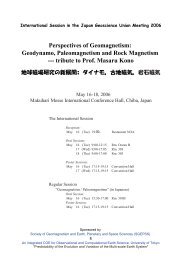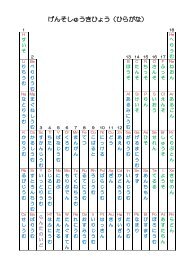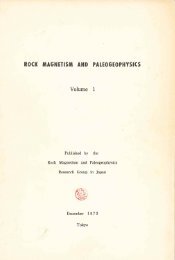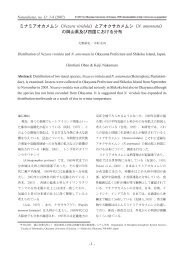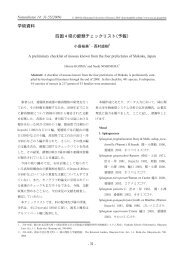Create successful ePaper yourself
Turn your PDF publications into a flip-book with our unique Google optimized e-Paper software.
<strong>Python</strong> <strong>Tutorial</strong>, Release 2.6.2<br />
It is not safe to modify the sequence being iterated over in the loop (this can only happen for mutable sequence<br />
types, such as lists). If you need to modify the list you are iterating over (for example, to duplicate selected items)<br />
you must iterate over a copy. The slice notation makes this particularly convenient:<br />
>>> for x in a[:]: # make a slice copy of the entire list<br />
... if len(x) > 6: a.insert(0, x)<br />
...<br />
>>> a<br />
[’defenestrate’, ’cat’, ’window’, ’defenestrate’]<br />
4.3 The range() Function<br />
If you do need to iterate over a sequence of numbers, the built-in function range() comes in handy. It generates<br />
lists containing arithmetic progressions:<br />
>>> range(10)<br />
[0, 1, 2, 3, 4, 5, 6, 7, 8, 9]<br />
The given end point is never part of the generated list; range(10) generates a list of 10 values, the legal indices<br />
for items of a sequence of length 10. It is possible to let the range start at another number, or to specify a different<br />
increment (even negative; sometimes this is called the ‘step’):<br />
>>> range(5, 10)<br />
[5, 6, 7, 8, 9]<br />
>>> range(0, 10, 3)<br />
[0, 3, 6, 9]<br />
>>> range(-10, -100, -30)<br />
[-10, -40, -70]<br />
To iterate over the indices of a sequence, you can combine range() and len() as follows:<br />
>>> a = [’Mary’, ’had’, ’a’, ’little’, ’lamb’]<br />
>>> for i in range(len(a)):<br />
... print i, a[i]<br />
...<br />
0 Mary<br />
1 had<br />
2 a<br />
3 little<br />
4 lamb<br />
In most such cases, however, it is convenient to use the enumerate() function, see Looping Techniques.<br />
4.4 break and continue Statements, and else Clauses on Loops<br />
The break statement, like in C, breaks out of the smallest enclosing for or while loop.<br />
The continue statement, also borrowed from C, continues with the next iteration of the loop.<br />
Loop statements may have an else clause; it is executed when the loop terminates through exhaustion of the list<br />
(with for) or when the condition becomes false (with while), but not when the loop is terminated by a break<br />
statement. This is exemplified by the following loop, which searches for prime numbers:<br />
>>> for n in range(2, 10):<br />
... for x in range(2, n):<br />
20 Chapter 4. More Control Flow Tools



